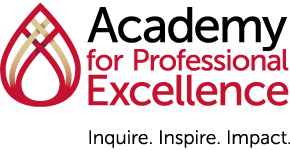September is Child Welfare Workforce Development Month. This is a time for us to recognize and honor the dedication of Child Welfare workers who provide critical services to our communities.
It is also a time to spotlight the importance of workforce development in child welfare. At the Child Welfare Development Services (CWDS), we believe that the workforce employed by public child welfare agencies and the children and families served by them can experience increased empowerment, positive changes, an enhanced quality of life, and feel a sense of inspiration and hope through the delivery of comprehensive, culturally appropriate, and competency-based workforce development services.
Workforce development is much more than just training. It is a multi-level approach to improving practice and outcomes. It occurs at the individual level (building skills and competencies at every level of the workforce) and at the organizational level (building capacity, leadership, and processes that support best practices that lead to positive outcomes).
Continue reading below to learn about 5 workforce development ideas you can incorporate into your practice.
Thank you, Child Welfare workers, for all that you do!
1) Check out CWDS’s microlearnings. We know you can’t remember everything from an in-person training. Our microlearnings are bite-sized, relevant, and created to enhance your post-classroom training. These resources are at your fingertips to support the work you do every day.
2) Review the resources from the National Child Welfare Workforce Institute (NCWWI). This is one of our favorite child welfare workforce development sites. It has webinars, infographics, and online learning opportunities for every level of the organization.
3) Attend a Training or Simulation. CWDS offers an array of training opportunities. We strive to make our classroom trainings more interactive and skills-based but if a regular classroom training is not what you are looking for, try on simulation. Simulation provides a safe and structured environment for you to practice your skills in a realistic setting. Talk with your supervisor to find a training or simulation that will take your practice to the next level.
4) Sign up for Coaching. One of the best ways to build skills and to support yourself is to participate in coaching. Learning is a lifelong journey that never ends no matter what position you are in or how long you have been doing it. Take an hour for yourself and schedule time with a coach available to you.
5) Learn about Culturally Responsive Practice. Cultural Responsiveness is an organizational effort where all individuals share the responsibility to achieve system changes that will improve outcomes for the children and families involved in the Child Welfare System. At CWDS’ Cultural Responsiveness Academy, participants have the unique opportunity to explore cultural differences, recognize potential individual and organizational biases, and practice culturally responsive behaviors through facilitated discussions.
Written by the Child Welfare Development Services (CWDS) team
Return to Blog & Latest News


